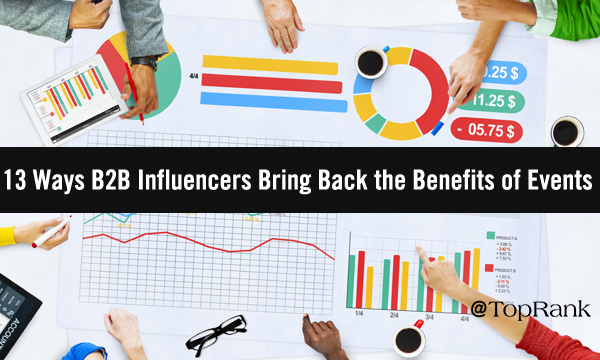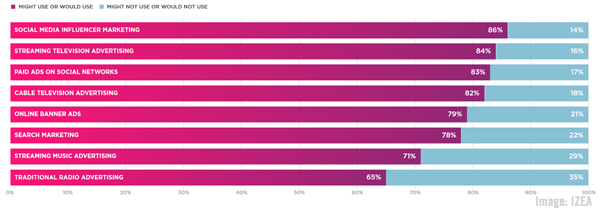A cultural paradigm shift and legislative upheaval has led to an overhaul on the narratives around cannabis consumption.
Once an illicit market, legalization has led to an influx of marijuana products flooding the market — changing perspectives on recreational and medical marijuana use.
To reflect this leap, your cannabis business’ marketing and branding need to mirror the cannabis sector’s shift from ‘stoner culture’ to medicinal uses and harmless recreation.
Unfortunately, conventional social networks and search engines place stringent restrictions on cannabis advertising — which means relying on organic reach to access your target markets.
In this article, we’ll share proven, targeted marketing solutions that will enable you to affordably and successfully reach your niche audience and drive conversions.
Cannabis Marketing Strategy #1: Raise the Bar on Your Branding and Language
Your marijuana company’s brand and language define the target market you’ll be able to access.
Traditional cannabis rhetoric has focused on the ‘stoner culture’.
To combat this, your branding efforts should concentrate on shifting that narrative to current-day thinking about cannabis use.
Defining your marijuana company as a smart, professional entity demonstrates that you adhere to all legalities and adds credibility that showcases your entity as an authority on this paradigm shift.
Your branding and language should move away from the tie-dye, Bob Marley, five-point leaf look.
Instead, consider a more health-driven, natural-looking finish:
- Craft a slicker, executive feel by harnessing sleek lines and minimalist, clean, medicinal branding.
- To enhance legitimacy, team this with official certifications and labeling.
These elements heighten integrity and diminish outdated concerns about ‘drug culture.’
Consider companies like SEVEN POINT (below), who piggyback on fashion branding.
By using simple sans serif fonts and high-quality, Instagram-worthy images, the brand conveys a high-class brand persona that steers clear of the conventional ‘drop-out’ buyer concept:
(Image Source)
Alternatively, take inspiration from companies like Level Blends.
Through medicinal-looking packaging, the company plays upon consumer trust of pharmaceutical products:
(Image Source)
Not only should your visual branding reflect the current climate of cannabis consumption, your wording and tone should also express this positive transformation.
Cannabis marketing should always utilize medical terminology. This swings audience perspectives from marijuana as an illicit substance to a viable medicine.
Consider the following changes to your brand’s language:
- “Bud” becomes “flower”
- “Hit” becomes “dose”
- “Munchies” becomes “Increased appetite”
- “Baked” becomes “Reduced anxiety”
Direct your tone toward the relevant target audience for your particular company’s products.
Recreational marijuana branding is different from medicinal branding.
While medical marijuana marketing highlights the clinical effects and health benefits of cannabis, recreational cannabis firms should emphasize the mood-based effects.
Custom branded products and merchandise, such as t-shirts and tote bags, serve as public affirmations of your brand. A strong logo and slogan, such as Goodship’s blimp emblem and ‘Higher Education’ motto, act as customer endorsement when worn in public.
(Image Source)
Equally, sending branded merchandise to social media influencers is a particularly effective marketing strategy.
Grow Your Cannabis Business
Contact HigherVisibility today to see how we could propel your online presence with a solid Cannabis or CBD focused marketing plan.
Cannabis Marketing Strategy #2: Inject Education into Cannabis Content Marketing
While the legal status and scientific understanding of cannabis may have altered, the general public still needs better education on its positive effects.
And that’s especially true if you’re looking to break into a new market. Though the medicinal benefits may be clear to current users, education is vital to push curious non-users into trying cannabis.
The Principle of Authority dictates that consumers place trust in experts. Through the concerted use of education, your company can serve as the expert authority needed to persuade customers to reconsider their outdated views on cannabis.
Stack your content marketing strategy with educational content that engages the audience while heightening your brand’s image as an authority. By educating users, you can shift the curious target sector from ‘acceptors’ to users.
Common misconceptions combined with society’s disparagement of drug use mean that cannabis use is generally shunned by the general public, despite legalization.
In this respect, providing reputable education can increase social acceptance. As Danny Keith, founder of Cannabis Club TV, notes “Without education of product, customers are ignorant and the lack of education is a white-hot space.”
Marketing tactics that support an educational format will increase your company’s credibility. Strategies include:
- Guest posts and interviews with compelling industry authorities
- Statistics and studies to legitimize claims
- Discussions on benefits
- Posts that dispel myths
- Expert testimonials
Packing educational content with relevant keywords will help your message reach your target audience. Try using our Bulk Keyword Generator tool to ensure your educational content ranks highly in search engines.
Cannabis Marketing Tactic #3: Target the Canna-Curious
While targeting cannabis users may seem like the logical first step, a national survey of 10,000 respondents found that 66% of marijuana users buy the same brand every time.
On the one hand, this means that you lock in new users for life. On the other hand, it means that there is little chance of encouraging an existing user to switch from their current brand to your cannabis products.
However, the same study showed that 43% of non-users are curious about trying cannabis products (in this case CBD products). In this vein, targeting the canna-curious serves as a prosperous route to locking in life-long customers.
In line with the advice above, approachable marijuana marketing and sales techniques that foster an educative approach are far more effective at enticing in inquisitive non-users.
This means steering the cannabis purchasing experience away from the idea of sordid back-alley ‘deals’. Instead, instill a smooth customer journey that emphasizes legitimacy and mirrors the familiar setting of regular retail shopping.
Todd Dodd, the CEO of Sweet Flower explains:
“The customer journey at Sweet Flower begins with the assumption that our customers shop more at retail stores than cannabis stores. Our retail stores are bright, well-lit, smell good, don’t have guards at the door, and have versatile color schemes that don’t overwhelm the products, so we follow that retail model — open, bright, airy, and melt the security and compliance functions into the background as much as possible, only to the extent required by laws, rules, and regulations.”
Here’s a snapshot of Sweet Flower’s store:
(Image Source)
The canna-curious target audience responds more positively toward experience-based messaging rather than images of ‘getting high’.
In this respect, emphasizing legalization and safety through ‘tried-and-testing’ labeling and educational materials cultivates a reassuring environment.
In the words of Jamie Warm, the CEO of Henry’s Original…
“Canna-curious consumers want to know they are purchasing safe, high-quality, and legally compliant products from a tried-and-tested brand. On every Henry’s Original package, you’ll see a Clean Green–certified sticker. The certification verifies sustainable, natural, and organic cultivation practices; pre approved plants, soil, and nutrients; full legal compliance; and crop inspection.”
Cannabis Marketing Tactic #4: Focus on Customers’ Experiences
Social media can be a minefield when it comes to marijuana marketing.
The prohibition of smoking and cannabis-related imagery makes social media marketing and advertising difficult.
To combat this, angle pay per click advertising toward customer experiences:
- Ensure that PPC campaigns and social media imagery reflect the feelings that customers get from your products
- Try to incorporate primary perspectives from real-world customers
- Have recreational users describe how your products improved their mood
- Ask medicinal users to describe the health improvements
Not only will this increase your credibility, but first-hand customer experiences also boost trustworthiness in the consumer space. Try inserting user-generated content, reviews, and ratings, testimonials, and feelings-based graphics into your content strategy.
Cannabis Marketing Tactic #5: Leverage Influencer Marketing
One of the top ways to incorporate user-generated content into your cannabis marketing strategy is to leverage influencer marketers. As social media influencers aren’t technically advertising channels, they bypass the restrictions on PPC advertising.
Since social advertising is a strict no-no, this limits Facebook, Instagram, LinkedIn, Pinterest (etc) marketing campaigns.
As a result, harnessing influencers on each of these social media platforms becomes the number one route to reaching audiences across these social networks.
Luckily, consumer behavior today relies heavily on the recommendation market. And this is especially true in the cannabis industry, where word-of-mouth and social media serve as the top marketing methods.
In fact, 68% of 18-34-year-old social media users are likely to purchase a product after seeing a friend’s post.
Instagram account, @womenofweeduk, is a great example of this. Promoting women-led marijuana business, @womenofweeduk acts as a promoter to connect customers to brands that serve their needs.
It is important to adhere to certain behaviors to prevent your influencer posts from being flagged or taken down:
- Don’t advertise prices or discounts
- Don’t advertise where products can be purchased
- Make sure nothing targets children
- Put a disclaimer on all posts
To widen your reach on social media, encourage your influencers to add relevant hashtags. These hashtags should be coherent with your entire marketing strategy. Using a keyword tool to find hashtags that relate to your other content marketing strategies.
Grow Your Cannabis Business
Contact HigherVisibility today to see how we could propel your online presence with a solid Cannabis or CBD focused marketing plan.
Cannabis Marketing Tactic #6: Connect with Niche Audiences via Cannabis Podcasts
Podcasts allow you to connect with the niche target audience already on the cannabis bandwagon.
This content format is less restrictive on promotion and advertising than conventional social media. What’s more, podcasts encourage long-form educational conversations surrounding cannabis use.
Where social media posts are constantly competing with each other for screen time, a listener tunes into a podcast to specifically engage in the content being shared.
Podcast listeners are likely to be more attuned to the message you are attempting to convey.
This means podcast listeners are better poised to buy into the concept behind your cannabis business. As a result, podcasts are a far more cost-effective strategy for cannabis marketing.
Your business cuts straight to the relevant audience on platforms with which they are already engaging.
There are various methods for tapping the podcast market:
- Sponsorship:
You can sponsor an existing podcast, giving yourself space to advertise on the platform — usually before the podcast starts or in an interval in the middle.
Advertising can be a quick route to selling to your relevant audience, especially with the promise of a discount code.
- Guest speaking:
Alternatively, marketing your company as a guest speaker on a podcast gives you a good chunk of time to speak passionately about the ethos and values behind your brand, as well as educating the audience.
This route enables you to solidify your cannabis company as an authority in the industry.
(Image Source)
Try diversifying your reach.
Don’t just stick to cannabis podcasts. Why not take the stage on shows that discuss health and wellness, entrepreneurialism, society and culture, spirituality, science, agriculture, and so on?
Depending on the product you sell, your reach is limited only by how creatively you feel you resonate with a topic’s audience.
Alternatively, you could always create your own podcast. Harness the different facets of your business’ benefits and invite experts to support these positive attributes.
Cannabis Marketing Tactic #7: Showcase Your Brand at Cannabis Events
The boom of the cannabis industry has led to a rise in expos, events, conferences, and festivals worldwide.
These events serve as excellent networking platforms to connect with potential customers, B2B suppliers, and industry contacts.
Each event serves up a different target audience. Where Switzerland’s Cannatech event is likely to provide technology-focused customers, California’s Cannagrow Expo is geared toward growers and agriculture-driven individuals.
(Image Source)
These events also offer a physical location for you to sell merchandise to widen your scope.
With more people sporting your logo and branding, you can broaden your geographical reach as they indirectly market within their own communities.
Cannabis Marketing Tactic #8: Access Your Audience on Cannabis Social Networks
Where conventional social media platforms limit the content of your PPC campaigns, cannabis-oriented social networks have sprung up to fill this gap.
Providing platforms for users and businesses to offer cannabis-based support and advice, cannabis social networks are alive with thriving communities of potential customers.
Each cannabis social network targets a different aspect of the industry. This offers the chance to use various angles to approach future markets.
For example, Grasscity Forums provides an open discussion platform for people to ask about cannabis-based solutions and share education. For medicinal cannabis companies, this provides an ideal opportunity to proffer products that help deal with problems that members are discussing.
Weedable is another social network that doubles up as a marketplace for cannabis products. Here, companies can build a business profile and open another channel to sales to a direct target market:
Dispensaries, both online and bricks-and-mortar, can benefit from Bud Hubz. Here, customers identify and rate dispensaries. If you are a cannabis dispensary, this network is the ideal place to build a solid reputation within the cannabis community.
Grow Your Cannabis Business
Contact HigherVisibility today to see how we could propel your online presence with a solid Cannabis or CBD focused marketing plan.
Final Thoughts
Restrictions on conventional social media channels make cannabis digital marketing more difficult than other industries. Due to the sensitive nature of cannabis and society’s previous poor perception, the cannabis industry needs to work harder to shift perspectives on cannabis.
For cannabis companies, this means more conscientious branding that reflects health-conscious values and professionalism to foster assurances around safety and legitimacy.
In terms of digital marketing, this means finding creative ways to bypass limiting social media advertising rules.
While it may seem simple on paper, the huge surge in the cannabis industry makes it difficult to pinpoint respectable channels for digital marketing.
- Which podcasts are most valued?
- Which social media influencers have the best reputation?
- Which cannabis events are cost-effective?
But with strategic thinking and planning focused on organic traffic, SEO will reign supreme for cannabis businesses. There are lots of opportunities to succeed and the businesses that start now will have a tremendous head start when rules become more lax.
The post Cannabis Marketing in 2020 [Proven Tactics to Sell More] appeared first on HigherVisibility.
The post
https://www.highervisibility.com/blog/cannabis-marketing/ appeared first on
https://www.highervisibility.com
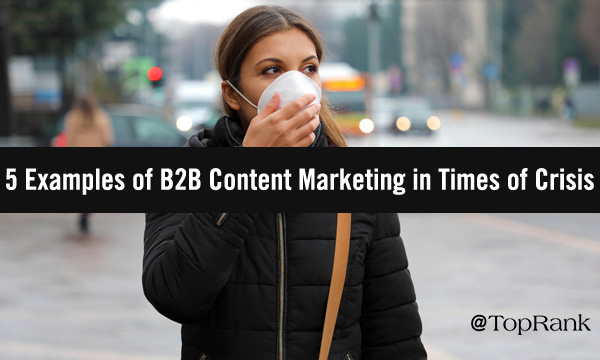
 There has been no greater disruption to business in the modern era than the COVID-19 pandemic. For many, it seems as though the world has stopped turning. For marketers, it seems as though now is the worst time to try to promote anything. But as our CEO, Lee Odden, said, “While there will be a period of adjustment, these changes do not mean the work stops. It doesn’t mean companies don’t need information, solutions, support, products and services.” And he couldn’t be more right. Your audience may even have a greater need now for your solutions or expertise. They’re trying to navigate through this uncertain time, too. And they’re looking for help now more than ever before. To help you answer those calls for help and know what types of content are successful in times of crisis, I’ve gathered five examples of effective B2B content marketing during the COVID-19 pandemic.
There has been no greater disruption to business in the modern era than the COVID-19 pandemic. For many, it seems as though the world has stopped turning. For marketers, it seems as though now is the worst time to try to promote anything. But as our CEO, Lee Odden, said, “While there will be a period of adjustment, these changes do not mean the work stops. It doesn’t mean companies don’t need information, solutions, support, products and services.” And he couldn’t be more right. Your audience may even have a greater need now for your solutions or expertise. They’re trying to navigate through this uncertain time, too. And they’re looking for help now more than ever before. To help you answer those calls for help and know what types of content are successful in times of crisis, I’ve gathered five examples of effective B2B content marketing during the COVID-19 pandemic.
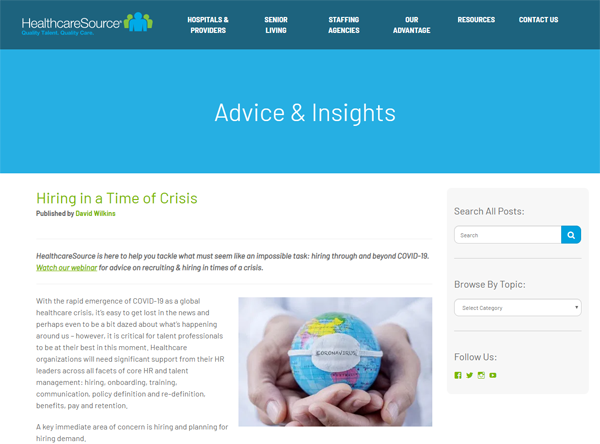
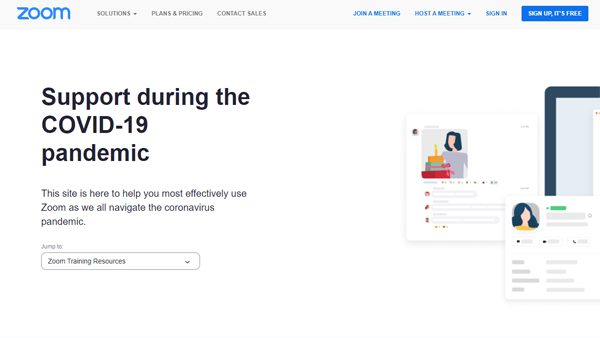 [bctt tweet="“Tailoring content for each audience segment creates a better experience.” — Anne Leuman @annieleuman" username="toprank"]
[bctt tweet="“Tailoring content for each audience segment creates a better experience.” — Anne Leuman @annieleuman" username="toprank"]
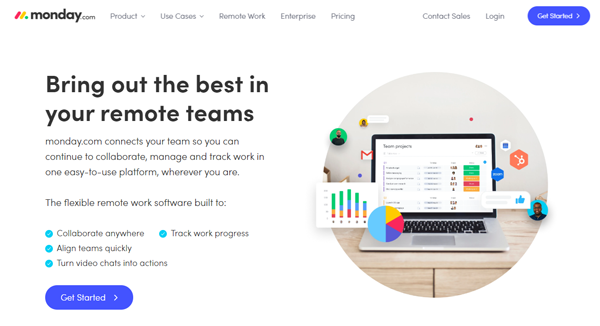 *monday.com is a TopRank Marketing client.
*monday.com is a TopRank Marketing client.
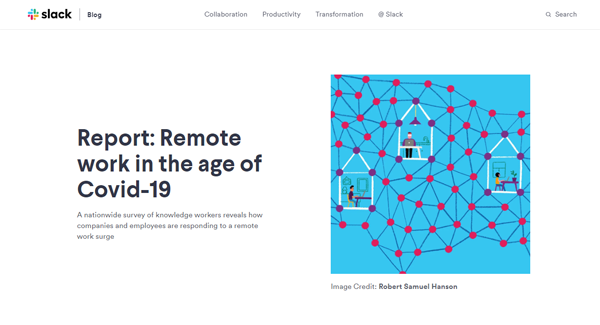
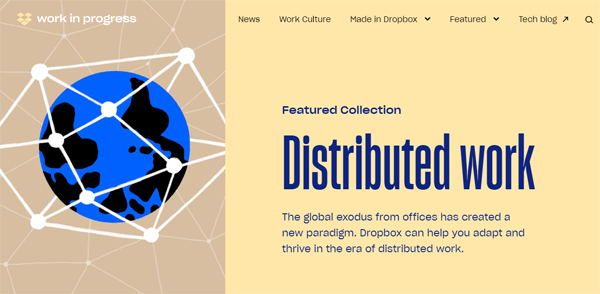
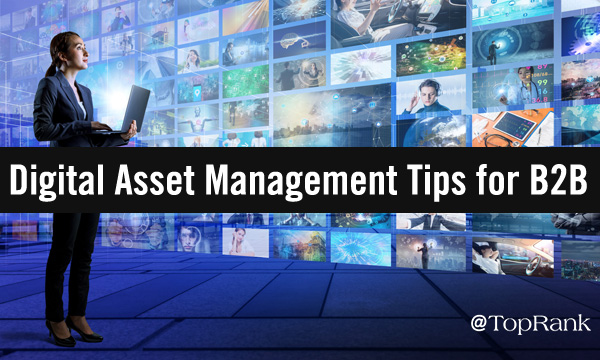
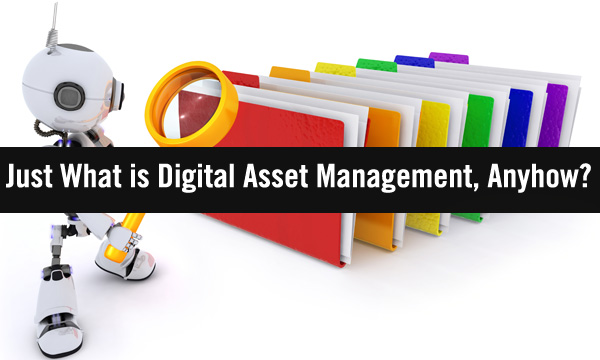 As we explored in our introduction to DAM technology, “
As we explored in our introduction to DAM technology, “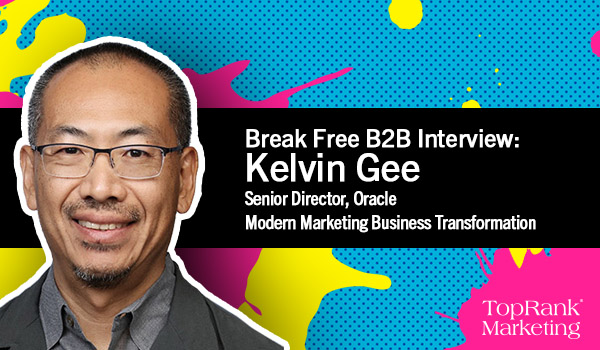















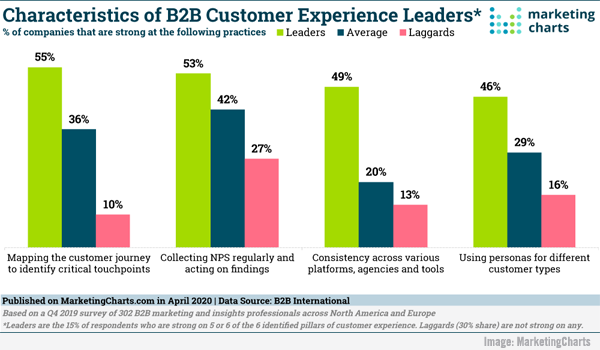
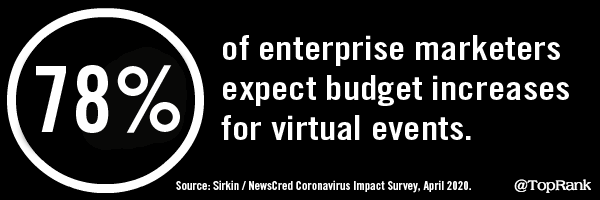 Millennials, Gen Z Want Distraction—and Action—From Brands During Crisis During the pandemic, baby boomers say that they want brands to support their employees and donate to the needy, while younger generations say they are paying more attention to how brands are advertising, according to recently-released survey data.
Millennials, Gen Z Want Distraction—and Action—From Brands During Crisis During the pandemic, baby boomers say that they want brands to support their employees and donate to the needy, while younger generations say they are paying more attention to how brands are advertising, according to recently-released survey data. 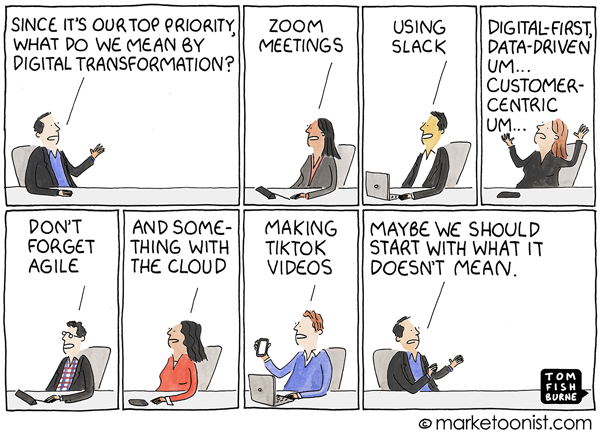 A lighthearted look at urgency without clarity on digital transformation by Marketoonist Tom Fishburne —
A lighthearted look at urgency without clarity on digital transformation by Marketoonist Tom Fishburne — 
